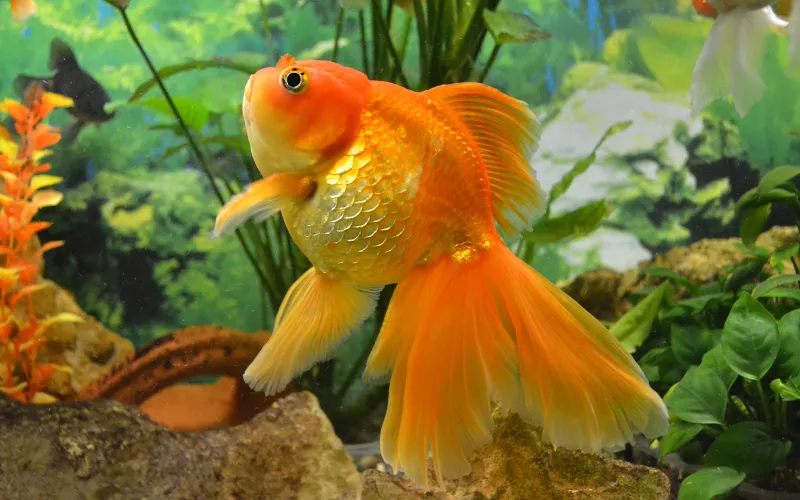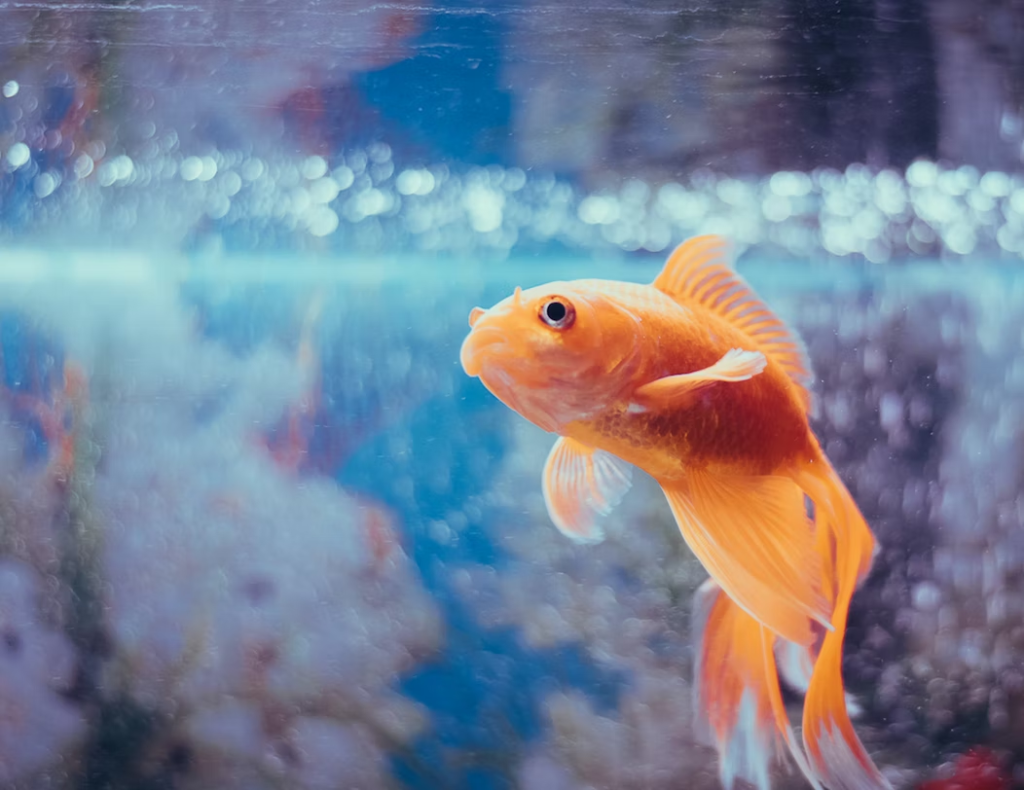
“Goldfish Active” might sound like a new fitness app for your aquatic friends, but it’s actually a term describing the lively, playful demeanor every goldfish parent dreams of. As captivating as goldfish can be with their gleaming scales and graceful swimming, they can sometimes seem as lively as a floating leaf. And while we’d all love to see our goldfish doing laps and somersaults in their tank, it’s important to remember that they’re not exactly training for the Fish Olympics.
In the magnificent world of pet ownership, goldfish are like the celebrities living in our homes. They don’t ask for much – just a cozy tank, some delicious food, and perhaps a nice castle or two to swim around. But what happens when these aquatic divas decide to go on a ‘lazy strike’, refusing to move their fins any faster than a snail’s pace? Fear not, dear goldfish fans, for we are about to embark on a journey to uncover the secrets of transforming your goldfish from a lethargic swimmer to a dynamic underwater superstar. Buckle up, it’s about to get splashy!
The Fascination With Goldfish as Pets
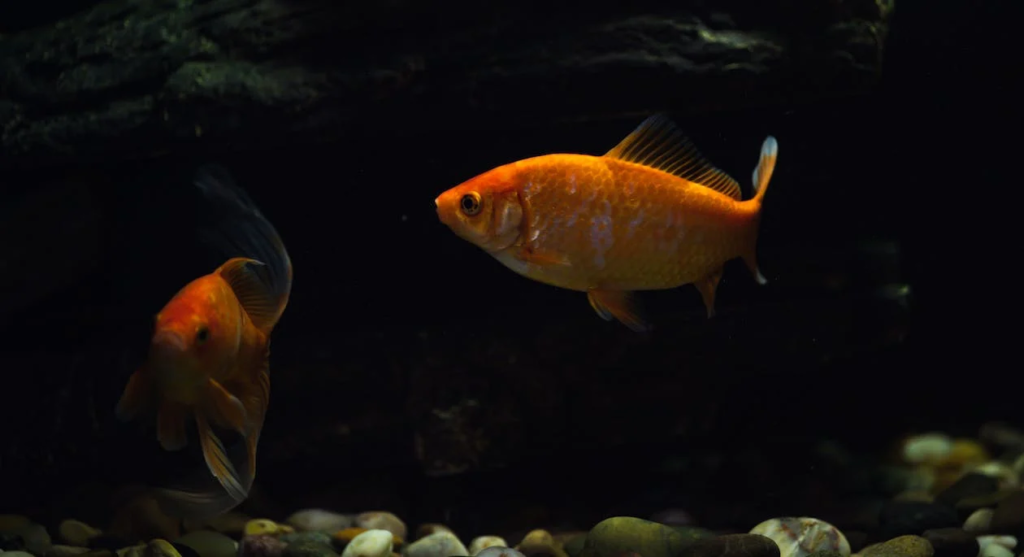
Goldfish have been prized as pets for centuries, dating back to ancient China. With their shimmering scales and wide-eyed gazes, goldfish are like treasure troves of tranquility that fit right into a tank. They’re low-maintenance, non-fussy, and most importantly, non-judgmental – they don’t care if you’re having a bad hair day or if your joke tanks harder than their home. It’s no wonder they’re a perennial pick-me-up for homeowners and apartment-dwellers alike!
Having a goldfish as a pet can be quite rewarding. Come rain or shine, there’s nothing quite as soothing as watching your fishy friend glide gracefully through the water. Their mesmerizing movements could rival any underwater ballet. But what happens when your once-enthusiastic swimmer seems to be channeling a potato? Don’t fret just yet! Let’s dive deeper and gauge the quirky behavior of these little fellas.
Overview of Common Goldfish Behavior

First off, we need to swim past the lazy stereotype of goldfish. Contrary to popular belief, goldfish are like the aquatic equivalent of your morning jogger, looking for things to pick, prod, and pester around the tank. You’ll usually find them cruising the tank bottom or exploring plants and decorations. Their amusing antics are a joy to watch. They’re always on the move, even hosting their version of the Midnight Olympics while you sleep!
So, what does it mean when your goldfish goes from a Michael Phelps to a couch potato? Why are they more into resting at the bottom instead of exploring their aquatic playground? Do they need a pep talk? Or perhaps, are they channeling their inner ‘Finding Nemo’ star? Let’s dive into understanding goldfish behavior to unravel these mysteries next.
Understanding Goldfish Behavior

One of the critical appeals of a goldfish is its distinct, quirky behavior. And much like us humans, our little finned friends have a mixed bag of moods that can cue us to their overall well-being or lack thereof.
Normal Activity Levels for Goldfish
In the wild, goldfish are rather active creatures! They spend the bulk of their time foraging for food, playing with their goldfish buddies, exploring, and flashing their fabulous scales in all their glory. So, if you notice your pet goldfish circling the tank in seemingly undying devotion like a tiny, aquatic Mothra around a lightbulb, pat yourself on the back. It’s not obsessive-compulsive behavior – it’s just a goldfish doing goldfish things.
But here’s where the plot thickens. What if your goldfish reacts to your presence like an underwater sloth, seemingly too lazy to move? Don’t distressed, my fellow goldfish enthusiast. Let us delve deeper into the common misunderstandings surrounding goldfish laziness.
Common Misconceptions about Goldfish Laziness

Goldfish are known for many things: their dazzling color, their bowl-honed journeys in epic circles, and their…laziness? Yes, the concept of a goldfish being an idle, just-floating-around kind of pet is a common myth, mostly owing to our lack of understanding of their behavior.
What we plainly tag as laziness might actually be the goldfish’s way of handling a less-than-optimal tanky situation (pun intended!). In truth, a healthy goldfish is a busy-body goldfish, always in search of food, wiggling their fins, or bouncing off the walls in pure, uncontrollable goldfish exuberance.
Yet, our interactions with them are often limited to a glance through the glass of a bowl, altering our perception of them. Perhaps, your goldfish isn’t lazy, after all. It might be trying to tell you something more.
Factors That May Cause Apparent Laziness in Goldfish
Your goldfish’s behavior may change due to a variety of factors. Poor water quality, unsuitable temperature, low-quality diet, inadequate stimulation, or even a lack of goldfish companionship can lead to what we interpret as laziness. It might actually be your goldfish flipping in its scale-language, “Hey, something is not right!”
Sometimes it’s not about laziness at all, but rather a sign of stress, illness, or underlying health problems. Keep an eye on changes in your goldfish’s behavior. If in doubt, always consult a vet.
In essence, your goldfish could be the aquatic equivalent of a marathon runner, or the most jovial party animal on the block! The key is taking the time to provide the best possible environment for your goldfish and understand its behavior. Now that we’ve dived into the world of goldfish and their ‘apparent laziness,’ let’s swim into another crucial aspect of their lives— their environment!
Choosing the Right Environment
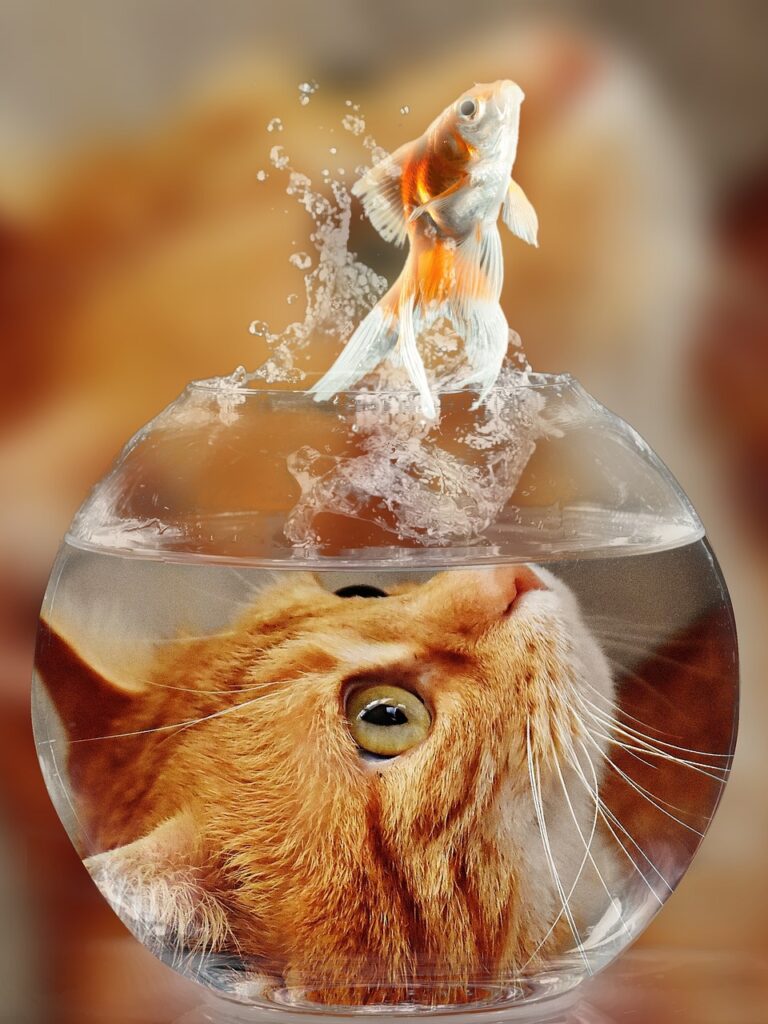
Dedicating a cozy corner of your apartment to your fluffy feline or setting up a playpen for your bouncing beagle might seem comparatively easier decisions. But when it comes to creating the perfect pad for our finned friends, it’s a whole new kettle – or rather, tank – of fish. Let’s dive into the ways you can create an optimal environment for your goldfish to ensure they aren’t just lazily floating around.
The Importance of a Suitable Tank Size
Think of it this way. You wouldn’t enjoy living in a broom closet, would you? The same notion applies to your goldfish. Being cramped in a pint-sized bowl might bring back some form of nostalgia from your grade-school carnival’s win-a-fish game, but it’s no place for a maturing goldfish. For goldfish, their tank is their world – and let’s face it, we all want a bigger world! More space allows for better water quality management, smoother movement, and reduces stress. A typically recommended tank size is 20 gallons for the first goldfish and an extra 10 gallons for each additional one. Now doesn’t that sound better than a broom closet?
After properly implementing the “more the merrier” principle for your goldfish’s housing situation, let’s swim on to another significant factor – water quality.
Proper Filtration and Water Quality

Once your goldfish has space to host its version of “Under the Sea,” maintaining excellent water quality remains another major concern. Goldfish aren’t exactly known for their cleanliness. Like some roommates you’ve had, they are messy eaters and contribute generously to waste production. Over time, their waste produces ammonia that can be toxic for fish, calling for a good filtration system.
A proper and efficient aquarium filter keeps the water clean and oxygenated, allowing your goldfish to breathe easier, literally. Frequent water changes and regular maintenance also goes a long way in ensuring that your goldfish isn’t just surviving, but thriving, leading to a more active and less “lazy” fish.
We’ve covered space and cleanliness, but for the pièce de résistance, let’s set the stage with the perfect temperature and lighting.
Temperature and Lighting Considerations
Although your goldfish might not tan or complain about the heater, the truth is, they’re as sensitive to temperature and lighting as (or perhaps more than) we are. Goldfish prefer a temperature range between 65-75 degrees Fahrenheit, and dramatic shifts can cause them stress, leading to disease and lethargy.
Setting your thermostat is only half of the equation. Ensuring your goldfish get their daily dose of a “sunrise” and “sunset” is also critical – it helps maintain their natural rhythm and activity levels. However, remember that they aren’t nocturnal party fish. Too much light can lead to algae problems in your tank and stress for your goldfish.
Having covered the 3 core aspects of creating a thriving environment for your goldfish, we hope your pet will be doing less lounging and more swimming! Up next, we go into detail on the kind of banquet befitting your royal goldie. We’ll say ‘Bon appétit’ to the commoners’ fish flakes and redefine your goldfish’s fine dining options. So stay tuned!
Feeding Habits

Providing a Balanced Diet for Your Goldfish
Just like us humans, goldfish have their own version of a food pyramid. Although your goldfish may not need to watch its carbs or detox on green tea, it definitely needs a well-balanced diet to thrive. This isn’t your “Netflix and chips” kind of balanced diet — it’s more about the right combination of proteins, vitamins, and carbohydrates. Providing your goldfish with a variety of foods, including specially-formulated fish flakes, vegetable bits, and occasional tiny live or frozen foods, you can ensure that their diet is as balanced as a gymnast on a beam, and full of the nutrients they require.
Avoiding Overfeeding or Underfeeding

Here’s where it gets tricky. Your goldfish’s eating habits can make a boa constrictor seem shy. They tend to act like starved predators when approached with food, but don’t let their enthusiasm fool you. Goldfish, much like humans on Thanksgiving, are prone to overeating, and it could be harmful. Overfeeding can lead to fatty liver disease and other health issues.
If you want to understand how to prevent this, you can read more about it in this article Strategies to Prevent Overfeeding Your Goldfish. This comprehensive guide will provide detailed strategies to help you regulate your pet’s feeding habits.
On the flip side, underfeeding isn’t exactly a proper diet plan for your goldfish either. The key here is balance – try feeding them smaller amounts twice a day instead of one big feast. Ration their food, as you would your midnight snacks. Just remember, maintaining a proper diet for your goldfish requires a careful balance to avoid both overfeeding and underfeeding.
Variety in Food Options
Your goldfish might enjoy crunching on those flakes, but even they would fancy a change of menu every now and then. Adding some boiled peas (shelled, of course, we don’t want them nibbling on hard pea jackets), lettuce, spinach, and even bits of orange can add flavor to their routine meals. Think of these as fish-friendly nibbles you’d have while watching your favorite show. Who knows, your goldfish might just be looking forward to the next episode as much for the plot twist as for the surprise snack!
Having crossed the foodie landscape of your goldfish’s world, it’s time we dive deeper into the exciting world of tank furnishings – just how does one keep a goldfish entertained, enriched, and stimulated, you ask? Well, buckle up, as we embark on this exciting adventure up next. You might just learn something new about interior design – for fish tanks, that is.
Enrichment and Stimulation

We all need a tad bit of sparkle in our lives; be it a rewarding project or a Netflix binge. Even your goldfish shares your sense of ‘joie de vivre.’ In this section, we’ll explore the world of enrichment and stimulation for your goldfish to spring them out of lethargy.
The Role of Enrichment in Goldfish Activity
Just imagine yourself stuck in a room with nothing to do for days on end. You would probably start identifying with your ‘lazy’ goldfish, right? Enrichment plays a key role in any creature’s activity level, including your goldfish. Different objects and activities can stimulate your goldfish, giving them a mental workout and triggering their natural curiosity and playfulness. So next time you see Sherlock Holmes needing a puzzling case, remember your goldfish needs a stimulating environment too.
Providing Hiding Spots and Tank Decorations

Goldfish are like miniature aquatic explorers, and they love to navigate around obstacles, dissecting the mystery of a new world. Whether it’s a craggy rock formation or a hollow pirate ship, your goldfish will love to snoop around them. Adding hiding spots and various tank decorations not only lends a Las Vegas charm to their living space but also supplies your goldfish with a fun ‘swim-through’ playground.
Integrating some natural elements like live plants can also enhance your tank’s environment, contributing both aesthetic and health benefits. Here’s a great resource on the 10 Best Live Plants for a Goldfish Aquarium that can guide you through selecting the right plants for your goldfish’s habitat.
And remember, your goldfish aren’t just hiding out of shyness – for aquatic creatures, these spots offer a much-needed sense of security. Creating a rich and diverse environment can help ensure your goldfish remain active, engaged, and most importantly, safe.
Introducing Companions or Tank Mates
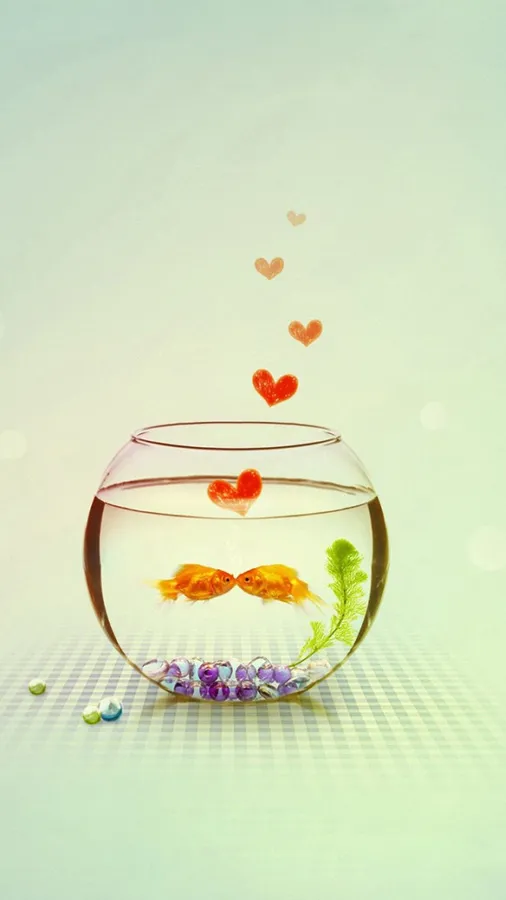
Remember that time when you were alone at a party and didn’t anyone else there? Yeah, that was awkward (sigh). Your goldfish feels the same way when it’s left alone in its watery world. Companionship can make a significant difference in the activity level of your goldfish. Not all fish are community-friendly, but goldfish usually play well with others, especially their kind. So, bring home a friendly aquatic neighbor for your goldfish and watch them socialize like teenagers on spring break.
Remember, stimulating environments lead to happy goldfish, and happy goldfish are active goldfish. But even in all this excitement, you must keep a watchful eye for any signs of distress. Sometimes, even the liveliest pets get sick. Let’s wade into the next section where we’ll discuss the indicators of goldfish illnesses and what actions we should take.
Health Concerns

Perhaps your goldfish is not lazy after all. It might just be under the weather. Yes, fish can get sick, too. And yes, it’s harder to spot a goldfish’s sniffle, so we have to rely on other signals. Let’s dive deeper into this issue; perhaps we will find out why your goldfish is the aquatic version of a couch potato.
Signs of Illness or Distress in Goldfish
Goldfish, like other pets, can exhibit signs of illness or distress. Unfortunately, they can’t whimper, cough, or post a sad status update on FishBook. Instead, they rely on you to interpret changes in their behavior or appearance. Signs may include lack of activity, loss of appetite, changes in color, rapid swimming or gasping at the surface, and bulging eyes. If your once lively fish turns into a lazy Susan that prefers the bottom of the tank to anywhere else, it could be a sign of trouble.
Just like humans who call in sick, goldfish do brisk business in sick days, too. Next time your goldfish clocks in late for the day’s swimming schedule, you might want to see a professional about it.
Consulting a Veterinarian for Proper Diagnosis
You don’t have to clinch a degree in fishiology to help your aquatic friend. When your goldfish acts strange, it’s best to consult with an aquatic veterinarian. Yes, they exist. These specialists can be found at vet hospitals and clinics equipped with specialized tools to diagnose goldfish health concerns safely.
Consider your vet as Dr. Dolittle; they speak fish, or at least, they understand the health needs of our submerged comrades. Getting a proper diagnosis provides a road map to recovery. Now, we have what we need to treat your fish. Let us put on our doctor coats and get down to business.
Treatment Options for Common Health Issues
Like any Dr. Seuss book, the number of ways to treat goldfish is truly beyond imagination. Most treatments begin with improving water quality, dietary adjustments, or adding certain medications to the tank water, where it’s absorbed through their gills.
Each health problem has a specific treatment; fish TB (yes, they get that!) may require an antibiotic additive, while fungal infections may need an antifungal solution mixed in the tank. But, these treatments should always be carried out under professional guidance. You’re not a fish pharmacist, after all!
Does your goldfish still seem lazy, or could it be feeling poorly? When it comes to goldfish care, knowledge is key and consultation is king. Remember, an active goldfish is a happy goldfish!
As we swim onward, let’s not forget that a goldfish can’t watch TV all day to pass the time. What then can we do to enrich the life of our goldfish? Let’s explore how to provide a stimulating environment in the next section. Now, where did I put my snorkel?
To Sum Up
You’ve begun to weave your way through the tumultuous waters of understanding your goldfish and why he might be putting on a thrilling enactment of “Lazy Sunday Afternoons.”
Promoting a Healthy and Active Lifestyle for Your Goldfish
Owning and nurturing a pet is no small task. It’s akin to having a non-human roommate. And as roommates go, you don’t want yours to be a couch potato. By promoting a healthy and active lifestyle for your goldfish, you’re not only fighting off the unwanted grey cloud of laziness but also steering away from potential health issues. Let’s remember, a happy fish is an active fish! Your goldfish tank should be the coolest fitness club, not a snooze fest.
Consider enriching the environment with engaging elements, feeding Mr. Bubbles a well-balanced diet, and maintaining optimal water conditions. Also, avoid transforming meal times into a free-for-all buffet. Sorry, Mr. Bubbles, but the ‘eat until you can’t swim’ policy isn’t doing your quick dash any favors.
Taking The Time to Observe and Understand Their Behavior
While you’ve been contemplating your goldfish’s lazy habits, you’ve inevitably spent some quality time gazing at the little water-borne marvel, haven’t you? Yet there’s a silver lining to this situation! It’s crucial to spend time observing and understanding their behavior.
Like any water-based Sherlock Holmes, keep an eye on their swimming patterns, eating habits, and any ticks that might raise a red flag. You may start making notes – soon, you’ll be ready to publish a best-selling novel: “The Secret Lives of Goldfish.” Who knows, this could open up a whole new career for you as a goldfish psychologist!
In the end, remember this: a lazy goldfish isn’t the end of the world. But a sad or sick goldfish could be the end of their world. As responsible pet owners, let’s hold our goldfish bowls high and swear an oath – to not let our finned friends be relegated to the ranks of the lazy!
So what are you waiting for? The journey towards understanding and combating your goldfish’s laziness is but a swim away. Dive in! After all, it’s better to be a goldfish in clean, flourishing waters than a beached whale.
Frequently Asked Questions (FAQ)
Question 1: Why is my goldfish always at the bottom of the tank?
Answer: This could be due to a variety of factors like water quality, diet, or even boredom. If it appears healthy and still moves but spends a lot of time at the bottom, it might just be a resting phase. However, if there are signs of distress, you should consult a vet.
Question 2: Could a small tank make my goldfish lazy?
Answer: Yes, living in a cramped, uncomfortable space can make your goldfish lethargic. A larger tank provides more space for your fish to swim and explore, keeping it active and healthy.
Question 3: How can I stop my goldfish from being lazy?
Answer: Assure a suitable environment, provide a balanced diet, and introduce enrichment elements in the tank. Regularly monitoring your fish’s behavior can also help spot any potential health issues early.
Question 4: Are goldfish naturally active or lazy?
Answer: Goldfish are typically quite active but their perceived laziness could be due to misconceptions about their behavior pattern. A properly tended goldfish will often become quite energetic.
Question 5: How can I tell if my goldfish is ill or not?
Answer: Signs of illness can be varied, from loss of color, appetite, or spending a lot of time motionless. Any abrupt changes in their usual behavior can signal something’s amiss.
Question 6: What should I feed my goldfish to help it stay active?
Answer: Goldfish thrive with a diverse diet that includes goldfish-specific pellets or flakes, as well as fruits, vegetables, and even worms for variety.
Question 7: Should my goldfish have company in its tank?
Answer: Yes, most goldfish are sociable and enjoy companionship. However, add tank mates carefully, assuring they are non-aggressive and compatible with your goldfish.
Question 8: Should I worry if my goldfish sleeps a lot?
Answer: Goldfish don’t technically sleep, but they do rest. If the resting period seems excessive or if its behavior changes, consult a fish veterinarian for advice.

